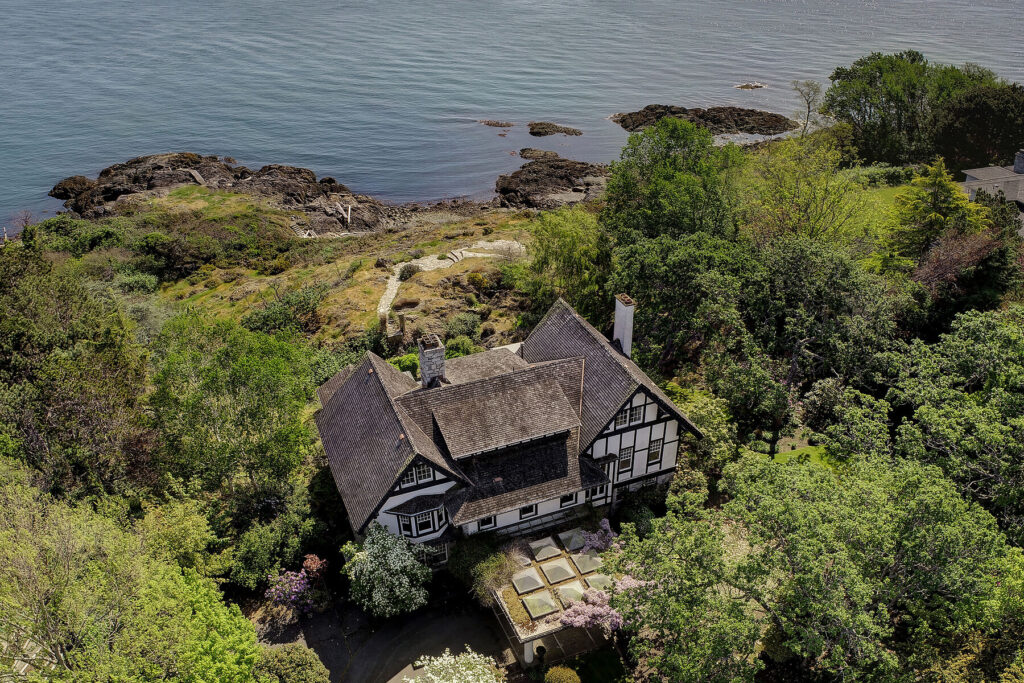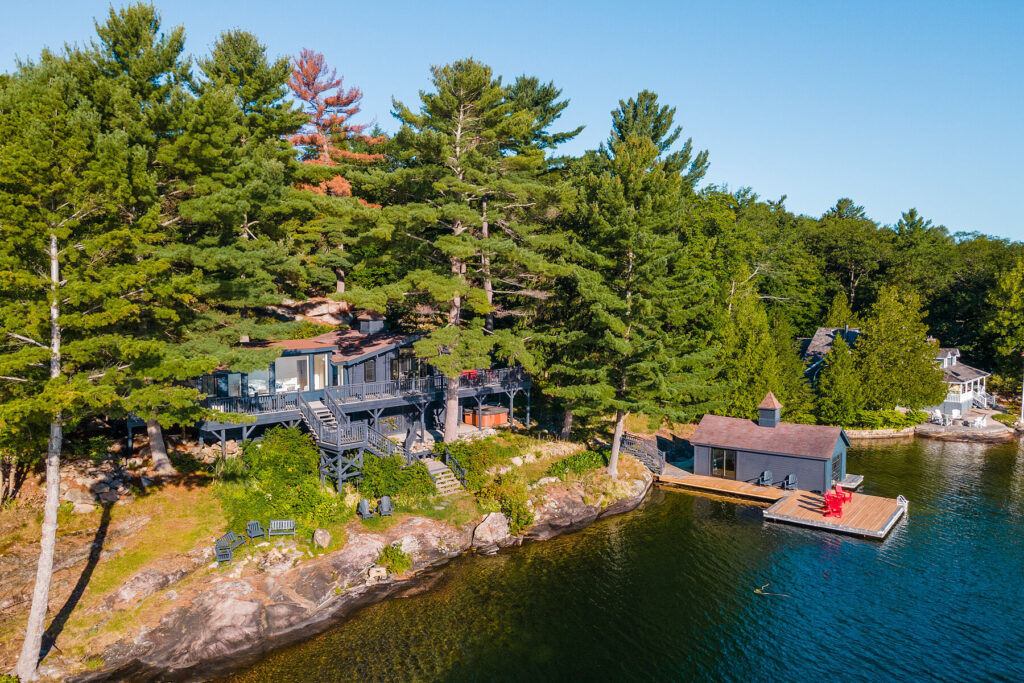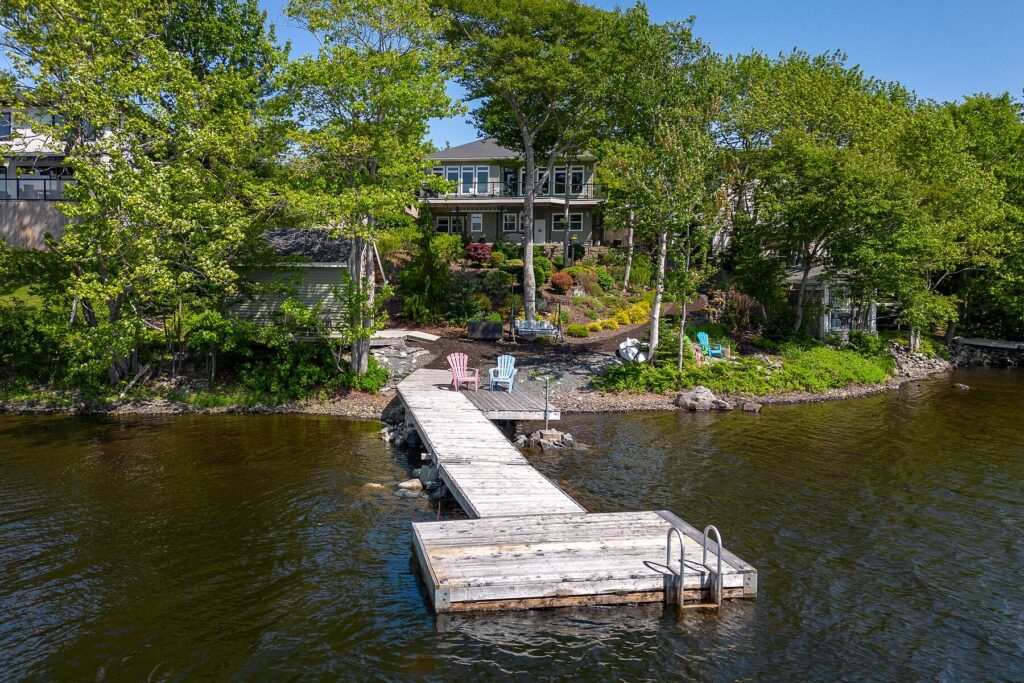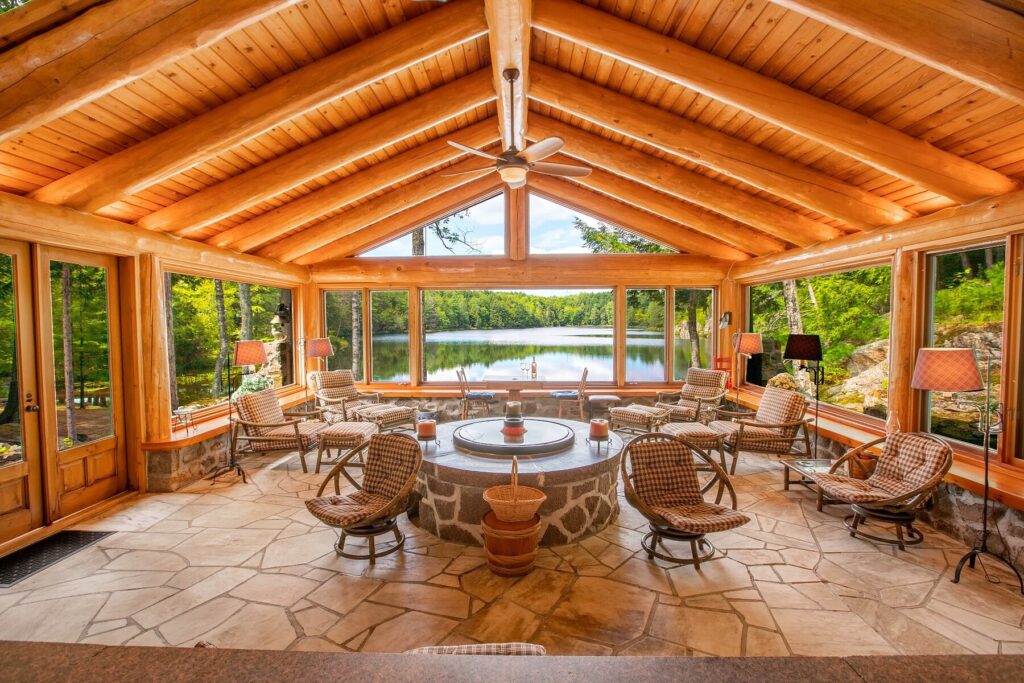Whether appreciating the view from indoors or enjoying the breeze along the shore, owners of waterfront homes benefit from a different perspective and pace. Little in life can match the tranquility and inspiration of life along the water—but when it comes to making the move to a waterfront property permanent, there is a unique set of considerations to keep in mind. Whether a coastal home is your retirement dream, vacation getaway, or your primary residence, here are things to note before settling on the shoreline.
Water Not Included

By law, bodies of water are not considered a part of private property in Canada. Riparian rights—the rights of landholders whose property runs into a water bank—differ by province, and are not always straightforward. A review of a property’s deed or title can reveal what rights are included with a particular home. Having an experienced real estate agent on hand to review water access and landholder rights before purchase can save you from unpleasant surprises.
To Dock, or Not to Dock

Review guidelines from your province’s Ministry of Natural Resources and the Department of Fisheries and Oceans, and familiarize yourself with changes to the Navigation Protection Act to start. You’ll also want to look over zoning bylaws (which will vary by municipality) to better understand dock size and coverage potential. In some cases, you may only be able to upkeep an existing structure instead of building a new one.
Shelter From the Storm

From the Great Lakes to the shores of the Pacific and the Atlantic, storms can be frequent and amplified by tidal patterns and concurrent weather. Some Canadian destinations—most notably Vancouver Island and Nova Scotia—are famous for their storm watching. The weather may influence your choice of building materials, placement of a new home (high tide is a factor here), or whether you develop a basement. Consider adding storm-proofing essentials such as storm shutters, and stainless steel locks and finishings to fight corrosion from salt air.
Keeping Up With the Upkeep

While some of the dryer areas of the country may be incorporating humidifiers into their new builds or renos, excessive moisture from large bodies of water can take a toll on even the most structurally sound estates. Consider your maintenance and groundwork load and speak to your neighbours about the effects of annual weather or salt water. They’ll have a good sense of the impact of the spray over time.
All Are Welcome

Water on or near the property may be considered public property, depending on provincial regulations and the type of waterway. Shorelines may also be considered public land by the government, so in some cases fencing and certain builds are not allowed. If you love the idea of chatting with fellow kayakers, fishers, hikers, or neighbours as they pass by your property, then living along a public shoreline is no sacrifice. But if you’d prefer absolute seclusion, perhaps a home with a water view is a better fit for you than one right on the waterfront.
Waterfront property owners know the serenity that comes from sunsets reflected over lakes, spotting sea life in the distance, and listening to the sounds of nature is well worth the due process to realize a waterfront dream.


